Ah no problem. Obviously your writing is in motion and authors change their mind constantly. 😀While this would be neat, and this is now a minor spoiler, RFK will not be appointed to the Court ITTL. Being President will likely be the capstone of Bobby's political life. I regret writing that update in the manner that I did after my plans shifted vis a vis Udall vs. Reagan. But we do the best with what we've got.This TL is, after all, a work in progress. Thank you all for rolling with the punches.
Correct. JFK will still pass away on February 14th, 1985.
You are using an out of date browser. It may not display this or other websites correctly.
You should upgrade or use an alternative browser.
You should upgrade or use an alternative browser.
Blue Skies in Camelot (Continued): An Alternate 80s and Beyond
- Thread starter President_Lincoln
- Start date
Ahhhh Blue Skies has its own Hippie in the House of Mouse!!!! LET'S GOOOOO👍🙌🤩
with 1983 just around the corner for this timeline how are you going to work in the nfl draft of 81 and 83 because you have a lot of future hall of famers and and also certain nfl dynasty will get thrown up into the air can pop up from this love the timeline Mr president
Last edited:
Here's an idea: Udall was very much starting up the machine for a re-election campaign, so a handfull of Udall 1980 merch is out there and is sought after by political collectors.While this would be neat, and this is now a minor spoiler, RFK will not be appointed to the Court ITTL. Being President will likely be the capstone of Bobby's political life. I regret writing that update in the manner that I did after my plans shifted vis a vis Udall vs. Reagan. But we do the best with what we've got.This TL is, after all, a work in progress. Thank you all for rolling with the punches.
Correct. JFK will still pass away on February 14th, 1985.
Not to chide Geekhis, but I am happy to see Touchstone be around here with Henson joining. It would feel fitting for the label to still find some successPresident Ron Miller created the “Touchstone Films” label - to allow the company to produce films of the kind that he wanted to make. These would be more mature, and some even adult-oriented than the overly sweet, kids stuff that the company had long come to be associated with.
As noted earlier in not wanting to co-opt the TL, it would be nice for The Jim Henson Company to not be absorbed. If anything, the one good thing that would be nice is to see Henson, like in Hensonverse, live into the 1990s and, maybe, 2000s. Though, it would also be nice for Disney to avoid some of OTL in its corporate tentaclesHe ultimately decided to leverage all the capital he could from his personal wealth, as well as acquiring a business loan with his shares in the Muppet Company as collateral, and purchased enough shares in Walt Disney Productions to earn himself two seats on the board of directors
Agreed👍it would also be nice for Disney to avoid some of OTL in its corporate tentacles
Yeah, I just use blue text out of habit.I know I'm not the only one who tapped expecting a link.
Started because I'd intended to make it my "OOC voice" when doing my own TL, but then that got bogged down in Development Hell, but I kept doing the blue text anyway.
I used to use a darker blue, but switched to this one because it's more readable in dark mode than the darker blue color is.
(I started using the darker blue back when there was still a medium "gray mode" option, but that was many server updates ago.)
JIM HENSON LIVES UNTIL 2024 BECAUSE BUTTERFLIES!Not to chide Geekhis, but I am happy to see Touchstone be around here with Henson joining. It would feel fitting for the label to still find some success
As noted earlier in not wanting to co-opt the TL, it would be nice for The Jim Henson Company to not be absorbed. If anything, the one good thing that would be nice is to see Henson, like in Hensonverse, live into the 1990s and, maybe, 2000s. Though, it would also be nice for Disney to avoid some of OTL in its corporate tentacles
As noted earlier in not wanting to co-opt the TL, it would be nice for The Jim Henson Company to not be absorbed. If anything, the one good thing that would be nice is to see Henson, like in Hensonverse, live into the 1990s and, maybe, 2000s. Though, it would also be nice for Disney to avoid some of OTL in its corporate tentacles
I mean, he could live into the 2020s. He’d “only” be in his 80s, and his death was such a freak event, so it’s impossible to say how old he could liveJIM HENSON LIVES UNTIL 2024 BECAUSE BUTTERFLIES!
Also, since we’re in Hollywood territory: I know it’s decades away, but please let Betty White make it to 100 here. Rip some years from Strom Thurmond if needs be
Last edited:
or Henry KissingerRip some years from Strom Thurmond if needs be
Nice to see the Hensonverse is gaining "Follow the Leader" status.Chapter 152 - The Bare Necessities: The History of Walt Disney Productions - 1967 - 1981Above: Roy O. Disney (left); Donn Tatum (center); and Card Walker (right); the first three men to succeed Walt Disney as the Chairman and CEO of Walt Disney Productions.
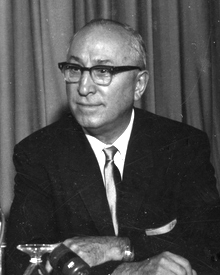
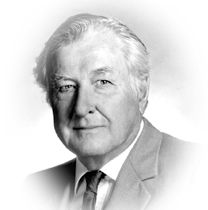
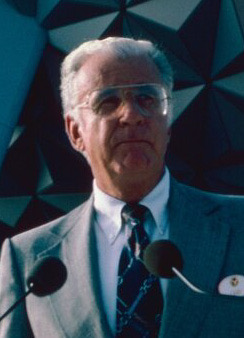
“Wherever I wander, wherever I roam
I couldn't be fonder of my big home
The bees are buzzin' in the tree
To make some honey just for me
When you look under the rocks and plants
And take a glance at the fancy ants, then maybe try a few
The bare necessities of life will come to you
They'll come to you!” - “The Bare Necessities” by Bruce Reitherman and Phil Harris
“It's not hard to make decisions when you know what your values are.” - Roy E. Disney
On December 15th, 1966, Walter Elias Disney died of circulatory collapse caused by lung cancer. He was 65 years old.
The following year, the last two films that Walt had worked on were released. The first, the animated The Jungle Book would go on to be the company’s most successful film for the next two decades, and is still widely considered a classic. The second, a live-action musical called The Happiest Millionaire was widely panned by critics and failed to break even at the box office.
This divide between beloved animation and frankly silly, one-dimensional family-friendly comedies, defined the issues that Walt Disney Productions faced and portented the company’s troubles yet to come. Following Walt’s death, the company largely abandoned animation, choosing to focus its efforts on the cheaper to produce live action films. Its animation staff declined from over five-hundred employees to as few as a hundred and twenty-five. From 1970 - 1977, the company hired only twenty-one animators in total.
Seventy-three years old at the time of his younger brother’s death, Roy O. Disney was ready to retire. He agreed to remain at the company, however, because he wanted to keep Walt’s legacy alive. He did the best he could.
In May of 1967, he managed to convince the Florida state government to pass and sign legislation to grant Disney World its own quasi-government agency in an area called Reedy Creek Improvement District. In exchange for the jobs the park would help create and Disney agreeing to handle infrastructure and other municipal functions in the area, the company was given virtual tax-exempt status and allowed to manage the area as it saw fit. Roy also renamed the park “Walt Disney World”, in an effort to keep his brother’s memory alive. Over time, EPCOT - Walt’s pet project - became less a “city of tomorrow” and more another part of the overall theme park. After 18 months of construction at a cost of around $400 million, Walt Disney World's first park, the Magic Kingdom, along with Disney's Contemporary Resort and Disney's Polynesian Resort, opened on October 1st, 1971, with nearly eleven-thousand visitors. A parade with over a thousand band members, four-thousand Disney entertainers, and a choir from the U.S. Army marched down Main Street. The icon of the park became Cinderella Castle. Three months later on Thanksgiving Day, cars traveling to the Magic Kingdom caused traffic jams along interstate roads. Florida Governor Reubin Askew (D) was there to help Roy cut the ribbon. Walt Disney World was a smashing success.
Following Walt’s passing, the next animated film Disney released was 1970’s The Aristocats. The film was a financial success - raking in nearly $30 Million on a budget of just $4 Million. It contained the classic song “Everybody Wants to Be a Cat”. But critics were lukewarm on the film, claiming that, “Walt’s absence is notable in what is ultimately a ‘lackluster’ outing.” The following year, the anti-fascist musical Bedknobs and Broomsticks was released and won the Oscar for Best Special Visual Effects. Despite the feather in the company’s cap, the film again received mixed reviews. Most critics praised its animated sequences, but panned the live action storyline. A week after the film’s release, on December 21st, 1971, Roy O. Disney died of cerebral hemorrhage at St. Joseph Hospital. He was seventy-eight years old.
At this point, you would think that some in the company would sit up and take notice of the trend. The company’s animation remained as beloved as ever. Their live action films, meanwhile, were generally seen as pretty terrible. The problem, Roger Ebert and most other critics pointed out, was that the studio was playing it far too “safe”. They picked harmless, inoffensive comedies that appealed to a family-friendly audience and young children. Worse, these films “talked down” to their audiences and were formulaic and predictable. They lacked creativity and spark. This problem affected the company on a far-deeper level than their film production, however.
“What would Walt do?” became the ultimate litmus test for any decision the company made. Roy followed it to the letter while he was in charge. After his passing, Donn Tatum, a senior executive and former president of Disney became the first non-Disney-family-member to become CEO and chairman of the board. Card Walker, who had been with the company since 1938, succeeded Tatum as president. Both Tatum and Walker were devout adherents to the cult of Walt-ism.
In November of 1973, the company released Robin Hood, which became Disney’s highest grossing film internationally at $18 million; this combined with its domestic returns brought the film’s total box office to nearly $30 million, a tidy sum indeed. The studio also produced Scruffy the following year - an adaptation of Paul Gallico's novel which centered on the barbary macaques of Gibraltar with its honorary leader named Scruffy, and the apes would be threatened by the Nazi Party's attempt to capture them from the British Empire during World War II. This film was less successful than Robin Hood, though it did turn a minor profit.
The mid 70s also brought another deluge of live-action comedies of dubious quality: Now You See Him, Now You Don’t (1973); Herbie Rides Again (1974); Herbie Goes to Monte Carlo (1977); Escape to Witch Mountain (1975); and Freaky Friday (1976).
While the company remained profitable (for the time being) under their leadership, earning gross revenues in excess of $250 million in 1973 (compared to just $220 million the year prior), it was also languishing. Where once Walt and his fellow creatives had revolutionized the entertainment industry and redefined western animation with their ingenuity, the company they’d helped to build became stagnant and overly conservative in outlook. This era came to be known to Disney fans as “the dark ages”.
Attempting to counter this ethos were the Disney family themselves.
Ron W. Miller, husband to Diane Disney and son-in-law to Walt, served as executive producer on a number of Disney productions throughout the 1960s and 70s. Though he was a loyal company man, Miller also believed strongly that the “creative engine” at the heart of the company was sputtering. As both the animation studio and the live action films faced diminishing returns, he came to believe that in order to save the company that his father-in-law had built, it needed to be reformed and quickly. Miller believed that Disney’s future lay in abandoning its entirely “aw shucks” image and maturing into more innovative, grown up, and thoughtful films. Miller was responsible, for instance, for bringing the British film Doctor Who Meets the Scratchman to Walt Disney Productions in 1977. Though Donn Tatum and Card Walker were dubious of the Time Lord and his strange blue police call box, Vincent Price starring as the villain and the massive box office success of Star Wars managed to convince them to finance the picture. It was a modest success, went on to become a cult classic, and began the partnership between the BBC and Walt Disney Productions in America. This helped to grow Miller’s influence within the company.
Above: Ron W. Miller (left) and Roy E. Disney (right); the two men were arch-rivals and loathed each other. They had to work together, however, if they were going to save the company their father-in-law and uncle built.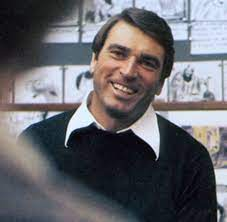
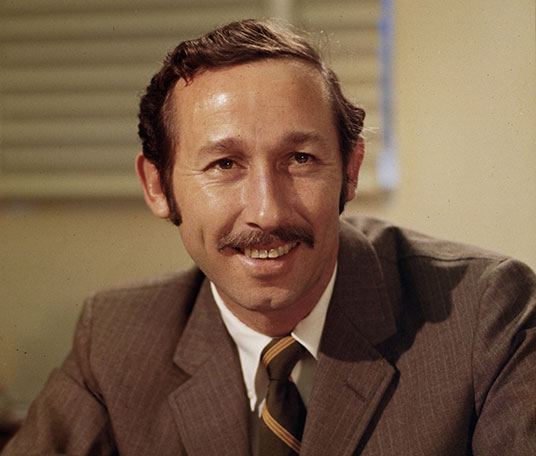
Roy E. Disney, son of Roy O., and the last Disney-family-member on the board of directors, should have been a natural ally of Miller’s in his quest to reform the company. Like Miller, Disney was “thoroughly disgusted” with the direction of the company after his own father’s death. Most of all, he was furious that the rest of the board favored downsizing the animation department, which Disney felt had been the origin of his uncle’s success in the first place. The only problem? Disney and Miller detested one another personally. Getting the two to work together was virtually impossible. Whenever one had an idea, the other would usually veto it, just to spite them. The result was that their influence (helped by their considerable shares in the company) was more divided than it should have been.
Thus, the late 1970s represented a major inflection point for the company.
In 1977, Donn Tatum decided to retire as CEO and chairman of the board. He would remain as a board member under the title “Director Emeritus”, but would hand control of the company over to younger (and hopefully more energetic) hands. Unfortunately, Card Walker, who succeeded Tatum as CEO, was also quite “Old Guard” in his beliefs about the company. He felt that he needed to protect “Walt’s Magic Kingdom” of joy and wonder from a cynical, profit-hungry corporate world. Ron Miller did move up to the presidency of the company. This resulted in Roy E. Disney resigning his position as an executive in protest (though he would remain on the board).
Indeed, despite Disney’s modest success thanks to films like Robin Hood and 1977’s The Rescuers, many in corporate America saw Walt Disney Productions less as a viable film studio and more as a repository of potentially valuable intellectual property. The so-called “Disney Classics” - films like Snow White & The Seven Dwarves; Bambi; Dumbo; and so on, were beloved by the American public. Periodic re-releases were always a reliable, low-cost source of revenue for the company. But, following Walt’s own policy, they spent most of their lives tucked away in the Disney “vault”. The home video revolution - watching the Disney classics at home on Betamax - was still years away for Disney. But various “corporate raiders” were interested in acquiring Disney, if only to dismantle the company and acquire its treasure trove of IP.
1977 also saw the release of Pete’s Dragon - a live-action/animated film - that earned $18 million against a budget of $10 million and earned lukewarm praise from critics. Another disappointment for Disney.
In 1979, Disney released its first PG-rated film and most expensive film up to that point at $26 million, The Black Hole. The film showed that Disney could use special effects in house, something it had been criticized for in the past. The Black Hole grossed $35 million, which was another disappointment to the company, which thought it would be a hit like Star Wars and to a lesser extent, Doctor Who Meets the Scratchman had been. That same year, they were also facing a possible mass-walkout by twelve of their animators, led by Don Bluth. The animators were likewise fed up with the company’s direction (or lack thereof, in Bluth’s words), as well as the gutting of the animator training program and atmosphere in the studio.
It was clear that if the Magic Kingdom was going to be saved, then they needed someone who could think outside the box - a visionary - someone who would return to the company with genuine appreciation for the creative process that had so defined the Walt years.
Enter Jim Henson.
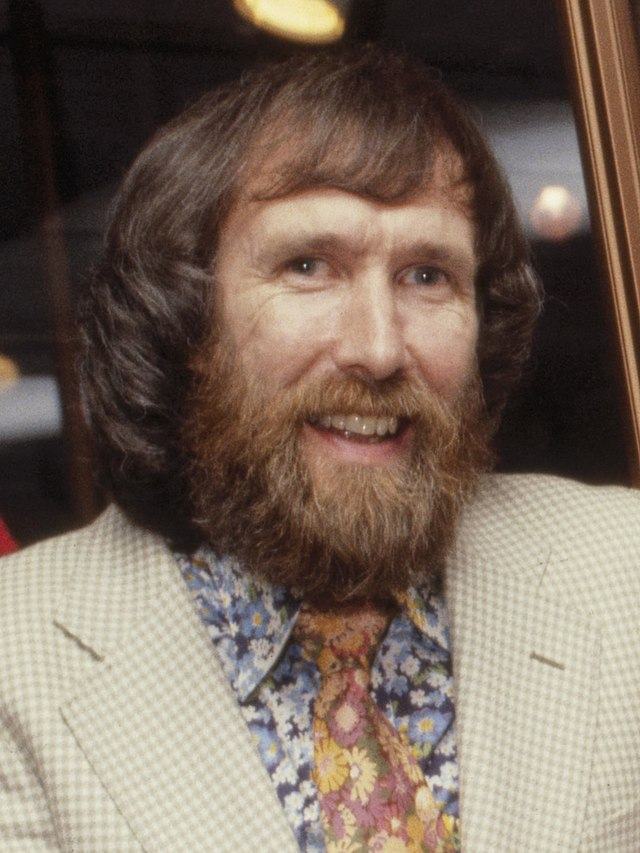
Something of an entertainment renaissance man, Henson was a puppeteer, animator, cartoonist, actor, inventor, and filmmaker, perhaps best known for creating the Muppets.
Born in Greenville, Mississippi and raised in both Leland, Mississippi and University Park, Maryland, Henson began developing puppets in high school. He created Sam and Friends (1955–1961), a short-form comedy television program, while he was a freshman at the University of Maryland, College Park in collaboration with Jane Nebel, who was a senior there. A few years later the two married. He graduated from the University of Maryland with a degree in home economics, after which he and Jane produced coffee advertisements and developed experimental films. In 1958, he co-founded Muppets, Inc. with Jane; it later became The Jim Henson Company.
In 1969, Henson joined the children's educational television program Sesame Street (1969–present) where he helped to develop Muppet characters for the series. He and his creative team also appeared on the first season of the sketch comedy show Saturday Night Live (1975–present). He produced the sketch comedy television series The Muppet Show (1976–1981) during this period as well. He won fame for his characters, particularly Kermit the Frog, Rowlf the Dog and Ernie, among others.
While Disney languished in 1979, Henson was arguably cresting a wave of popularity and acclaim for his work. The Muppet Movie was a box office and critical triumph, grossing more than $75 million domestically and internationally. In character as Kermit, Henson’s song “The Rainbow Connection” hit number 25 on the Billboard Hot 100 that year. The following year in 1980, during pre-production on The Empire Strikes Back, George Lucas would reach out to Henson and ask him to help make-up artist Stuart Freeborn in the creation and articulation of Yoda. Lucas had also intended for Henson to play and puppeteer the character, but Henson recommended Franz Oz instead, who was eventually cast as the Jedi Master.
Henson was a lifelong admirer of Walt Disney and his work. He held for animation the same child-like wonder that Walt had. And despite the numerous differences between the two men’s character and personality (Disney was conservative and old-fashioned; Henson a long-haired, bearded flower child of the sixties) few could deny the many similarities in creative outlook they shared. Hearing about the sorry state of the company in the late 70s saddened Henson. It also gave him an idea.
Henson was looking for a studio to finance his passion project - The Dark Crystal - that would give him the creative control and input that he wanted. At the time, in early 1980, he was struggling to find one that would give it to him. He ultimately decided to leverage all the capital he could from his personal wealth, as well as acquiring a business loan with his shares in the Muppet Company as collateral, and purchased enough shares in Walt Disney Productions to earn himself two seats on the board of directors.
Henson spent the rest of that year ingratiating himself to the Disney family (Miller and Roy E. in particular), becoming friendly with them, having dinner with Jane and them and their respective wives, even learning to play a few rounds of golf here and there. Though the “Old Guard” - represented by Walker and Tatum - would always view this “Hippie” with a fair deal of suspicion, even they had to admit that Henson had a way with inspiring people, and seemed like he could be the “spark” they needed to get the company back on track.
On Henson’s initiative, the board welcomed back Roy E. Disney, who became president of a newly created subdivision - Walt Disney Animation - which opened a new training program and began to cultivate the next generation of talent, taught by the remainders of Walt’s “Nine Old Men”. President Ron Miller created the “Touchstone Films” label - to allow the company to produce films of the kind that he wanted to make. These would be more mature, and some even adult-oriented than the overly sweet, kids stuff that the company had long come to be associated with.
Though by 1981, the project to “restore” Disney to its former glory was still very much in its infancy, spearheaded by Ron Miller, Roy E. Disney, and Jim Henson, it seemed to all in Hollywood that, for the first time in years, the studio was one to watch.

Next Time on Blue Skies in Camelot: 1981 Off-Year Elections in the US
…
OOC: This update, of course, owes a great debt of gratitude to Geekhis Khan’s incomparable Hippie in the House of Mouse timeline. Reading Geekhis’ work absolutely inspired me to have Henson join Walt Disney Productions and help them get their creative groove back. I wanted to give credit where credit was due. If you haven’t already, and have the time, I strongly encourage you to check out his timeline. Quite simply, it is one of my favorites that I have ever had the pleasure to read on this site.
I also want to explicitly state that this will not be a retread of that timeline. It does share a point of divergence, and some of the resulting butterflies will fly here as well. But I do not mean to co-opt Geekhis’ work in any way. This timeline will remain my own. Do not worry on that front.
Because this timeline’s intended focus is more on US domestic politics and global affairs than pop culture anyway, I can’t even begin to promise that I will go anywhere near as in depth about Disney or even pop culture in general.
With all of those credits and disclaimers said, thanks for reading!
Holy crap! Will this become the successor to @Geekhis Khan's TL? Great idea dude!
And also won’t be creatively bankrupt OTLAgreed👍
HERE is the link to "Closer to Home"
Greetings all!
Thanks for the feedback on "The Bare Necessities". Glad that you enjoyed the history of Disney ITTL.
HERE is the link to Closer to Home (Redux). I will also be adding the link to my signature.
I can't wait to see your entries!
Best wishes,
President_Lincoln
Thanks for the feedback on "The Bare Necessities". Glad that you enjoyed the history of Disney ITTL.
HERE is the link to Closer to Home (Redux). I will also be adding the link to my signature.
I can't wait to see your entries!
Best wishes,
President_Lincoln
Mr. President, you've been planning this chapter for 3 Months after announcing that you're going to make this special pop culture on The Walt Disney Company from 1967-1981 ITTL. After I've read this chapter quickly early this morning on my timezone, I'm impressed and you've exceed our expectations on what should've been the track of the company after the man who've built the animation industry from the beginning and became part of American Culture have passed away on December 15th, 1966, 10 Days after celebrating his 65th Birthday.
With the death of Walt Disney, it was an end of The Silver Age of Disney (1950-1967). And we geniuses arrive to The Bronze Age of Disney (known as The Dark Age, 1967-1981 ITTL). While Roy O. Disney, Donn Tatum, and Card Walker did their best to fill his shoes to lead the company during this era, it was still their lowest point until the arrival of Jim Henson in 1979. The Hippie is in Disney! Thus we've arrived to The Renaissance Age of Disney (1981-1999 ITTL), I don't know if Jeffrey Katzenberg and Michael Eisner would still enter or not, but I'm hoping they'll remain to this day now with Henson being part of the company ITTL. I'm hoping that their animated and live action movies be successful in their own way. With the creation of Touchstone Pictures, now they can create films that can appeal for adult audiences. You didn't included to this chapter about the success of The Snow Queen, which was premiered in 1973 ITTL. And also about Hayley Mills on would she still left the company or not ITTL? As her career transitioning into adolescence and adulthood, I'm hoping that she has her own success in the industry. By the time we've arrived to the 90's and 2000's ITTL, would the company still acquire many properties that they're later dominate the entire entertainment industry to this day? Or would they prevent the company to fall from corporate greed and remain to their roots while still dominating the entertainment industry to this day? Only time will tell geniuses.
Overall, another impressive chapter on The Bronze Age of The Walt Disney Company from 1967-1981 ITTL. My apologies for not being able to reply quickly after your post due to my schedule being occupied from morning to afternoon. Well geniuses, looks like we're going to The 1981 Off-Year Elections in the US. I'm just going to assume and predict that Democrats would have a clean sweep of victory and dominance to the positions that they're running for with President RFK leading the country throughout the decade ITTL. Whoever they may appear geniuses, we're certainly looking forward for them in the next chapter updates.
Here in the Philippines, we've just celebrated The Birth of Juan Ponce Enrile at the age of 100 on Valentine's Day (and also observed Ash Wednesday). Yes geniuses, he was born on Valentine's Day, 1924 in Cagayan. During this year, our country still under The American Period and we've officially entered in the Olympics. He'd lived through all of our 17 Philippine Presidents, also 17 US Presidents, and survived through many diseases, conflicts, and disasters in history. The longest-serving statesman in our country, while being the punchline for an endless memes due to his longevity. Had served since The Marcos, Sr. Administration, and currently serving in The Marcos, Jr. Administration IOTL. I know right geniuses? A polarizing figure in our history, while still has a sharp mind. We've expect the unexpected for him reaching his centennial, and still can't believe it geniuses. With Marcos, Sr. not being Philippine President and out of the picture ITTL, Enrile would slightly be on the good side of our history.
With the death of Walt Disney, it was an end of The Silver Age of Disney (1950-1967). And we geniuses arrive to The Bronze Age of Disney (known as The Dark Age, 1967-1981 ITTL). While Roy O. Disney, Donn Tatum, and Card Walker did their best to fill his shoes to lead the company during this era, it was still their lowest point until the arrival of Jim Henson in 1979. The Hippie is in Disney! Thus we've arrived to The Renaissance Age of Disney (1981-1999 ITTL), I don't know if Jeffrey Katzenberg and Michael Eisner would still enter or not, but I'm hoping they'll remain to this day now with Henson being part of the company ITTL. I'm hoping that their animated and live action movies be successful in their own way. With the creation of Touchstone Pictures, now they can create films that can appeal for adult audiences. You didn't included to this chapter about the success of The Snow Queen, which was premiered in 1973 ITTL. And also about Hayley Mills on would she still left the company or not ITTL? As her career transitioning into adolescence and adulthood, I'm hoping that she has her own success in the industry. By the time we've arrived to the 90's and 2000's ITTL, would the company still acquire many properties that they're later dominate the entire entertainment industry to this day? Or would they prevent the company to fall from corporate greed and remain to their roots while still dominating the entertainment industry to this day? Only time will tell geniuses.
Overall, another impressive chapter on The Bronze Age of The Walt Disney Company from 1967-1981 ITTL. My apologies for not being able to reply quickly after your post due to my schedule being occupied from morning to afternoon. Well geniuses, looks like we're going to The 1981 Off-Year Elections in the US. I'm just going to assume and predict that Democrats would have a clean sweep of victory and dominance to the positions that they're running for with President RFK leading the country throughout the decade ITTL. Whoever they may appear geniuses, we're certainly looking forward for them in the next chapter updates.
JIM HENSON LIVES UNTIL 2024 ITTL, BECAUSE BUTTERFLIES!
I mean, he could live into the 2020s. He’d “only” be in his 80s, and his death was such a freak event, so it’s impossible to say how old he could live
Also, since we’re in Hollywood Territory: I know it’s decades away, but please let Betty White make it to the age of 100 here. RIP some years from Strom Thurmond if it needs be.
I strongly second your statements geniuses, we're hoping for Jim Henson to survive and recover from his health issues ITTL and would continue to be part of the company as the 90's arrived up to Present ITTL. I second also on Betty White reaching her Centennial ITTL. We thought she's going to make it to that age, but was passed away on New Year's Eve 2021 IOTL, only weeks before her birthday. Speaking of her, would her husband still passed away in 1981 ITTL? I still can't believe that Henry Kissinger have reached his Centennial last year. Of all the people in the world, why God why indeed?Or Henry Kissinger.
Here in the Philippines, we've just celebrated The Birth of Juan Ponce Enrile at the age of 100 on Valentine's Day (and also observed Ash Wednesday). Yes geniuses, he was born on Valentine's Day, 1924 in Cagayan. During this year, our country still under The American Period and we've officially entered in the Olympics. He'd lived through all of our 17 Philippine Presidents, also 17 US Presidents, and survived through many diseases, conflicts, and disasters in history. The longest-serving statesman in our country, while being the punchline for an endless memes due to his longevity. Had served since The Marcos, Sr. Administration, and currently serving in The Marcos, Jr. Administration IOTL. I know right geniuses? A polarizing figure in our history, while still has a sharp mind. We've expect the unexpected for him reaching his centennial, and still can't believe it geniuses. With Marcos, Sr. not being Philippine President and out of the picture ITTL, Enrile would slightly be on the good side of our history.
Looking forward to this one Mr. President!Greetings all!
Thanks for the feedback on "The Bare Necessities". Glad that you enjoyed the history of Disney ITTL.
HERE is the link to Closer to Home (Redux). I will also be adding the link to my signature.
I can't wait to see your entries!
Best wishes,
President_Lincoln
Last edited:
Link to all cancelled Disney movies (even the DTV ones) here, if that helps.
I'm up for art requests again like with the Hensonverse, but my tablet time is going to be monopolized by college stuff for the next year and a half.
I'm up for art requests again like with the Hensonverse, but my tablet time is going to be monopolized by college stuff for the next year and a half.
Will absolutely use that as a resource. Thank you!Link to all cancelled Disney movies (even the DTV ones) here, if that helps.
I'm up for art requests again like with the Hensonverse, but my tablet time is going to be monopolized by college stuff for the next year and a half.
Cool! What kind of art do you do?Link to all cancelled Disney movies (even the DTV ones) here, if that helps.
I'm up for art requests again like with the Hensonverse, but my tablet time is going to be monopolized by college stuff for the next year and a half.
Share: